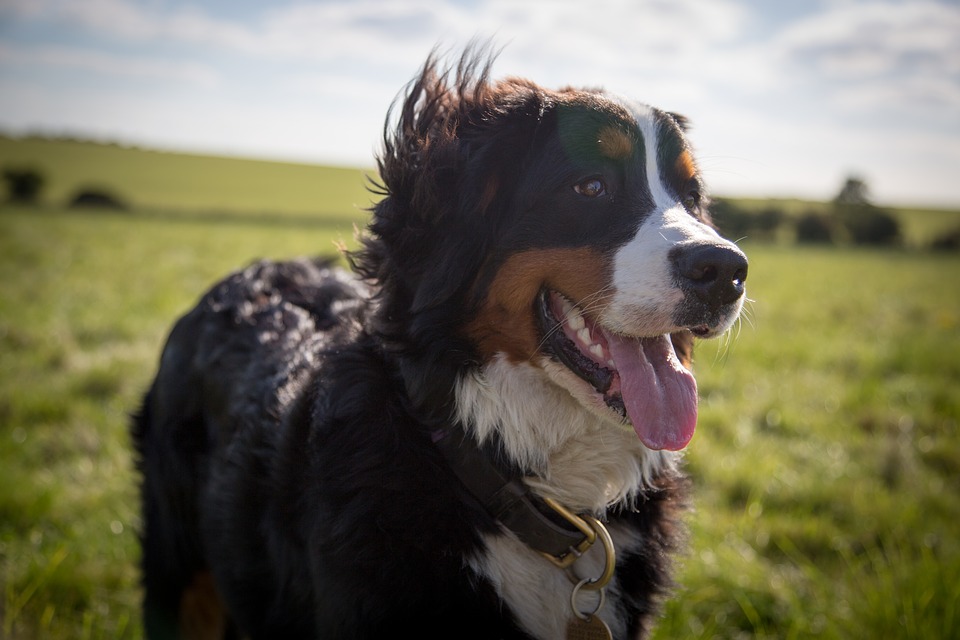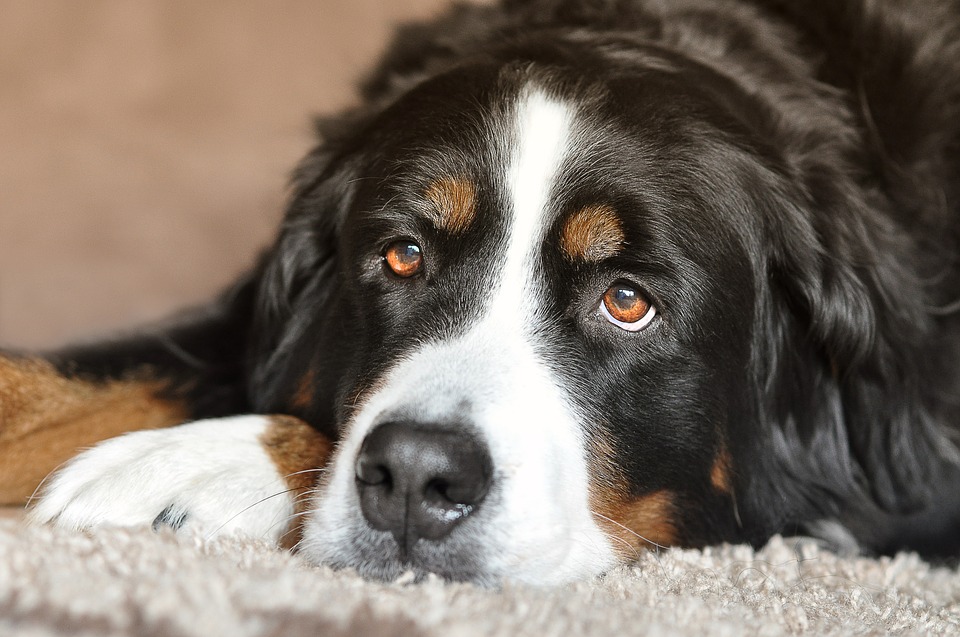The Bernese Mountain Dog
Vital Stats of Bernese Mountain Dogs
Vital stats of this breed include the following:
- Dog breed group: Working
- Height: 23 to 27.5 inches at the shoulder
- Weight: 65 to 120 pounds
- Lifespan: 7 to 10 years
Physical Characteristics of Bernese Mountain Dogs

Bernese Mountain Dogs are a large, hardy, and sturdy. They can easily manage work involving droving and draft. This is because he has the right combination of agility, pace and strength. He has a slightly long and square body, but is not tall. The slow trot of this breed is characteristic of his natural working gait, but its driving power is good.
This breed has a moderately long and thick coat which is straight or slightly wavy, offering insulation from extremely cold weather. The striking tri-color blend (a jet black ground color with rich rust and clear white markings) and gentle expression make it affable.
Care for Bernese Mountain Dogs
A weekly brushing is enough coat care for this mountain dog. This breed loves being outdoors, especially in cold weather. While the Bernese Mountain Dog can live outdoors in cold and temperate climates, he is so attached to his family that he cannot live alone outside.
Daily exercise in moderate amounts, such as a leash-led walk or a short hike, is ideal to remain fit. This dog should have plenty of space to stretch while indoors.
Health of Bernese Mountain Dogs

Similar to any other breed, the Bernese Mountain Dog is prone to specific health problems. Health problems in this breed include hip and elbow dysplasia, as well as other orthopedic problems. Eye diseases or defects that can affect the Bernese Mountain Dog are progressive retinal atrophy, cataracts, entropion and ectropion.
Additionally, this breed can develop a bleeding disorder called von Willebrand disease. Unfortunately, malignant histiocytosis, an often fatal type of cancer, is common in the Bernese Mountain Dog. He may also experience neurological problems associated with the degeneration or malformation of the part of the brain called the cerebellum.
History of Bernese Mountain Dogs
The Bernese Mountain Dog was used in his native Switzerland as an all-around farm dog by Alpine herdsmen in the canton of Bern. This breed drove cattle to pasture, pulled milk carts to the dairy, and acted as watchdogs on the farm. Typically, the Bernese Mountain Dog hauled milk in pairs, so it was common to see two of them hooked to a cart.
It is thought that the Bernese Mountain Dog descended from mastiff-type dogs who came to Switzerland along with Roman armies some 2,000 years ago. There they interbred with local dogs and were developed to help with farm work. However, the dogs almost disappeared with industrialization. In the early 20th century, the breed was revived to become a companion dog. Many still carried out their traditional farm duties as well though.
In 1937, the American Kennel Club recognized the Bernese Mountain Dog.
For more information on the Bernese Mountain Dog or other dog breeds, don’t hesitate to contact us here at All Pets Veterinary Medical Center with the link below!
















